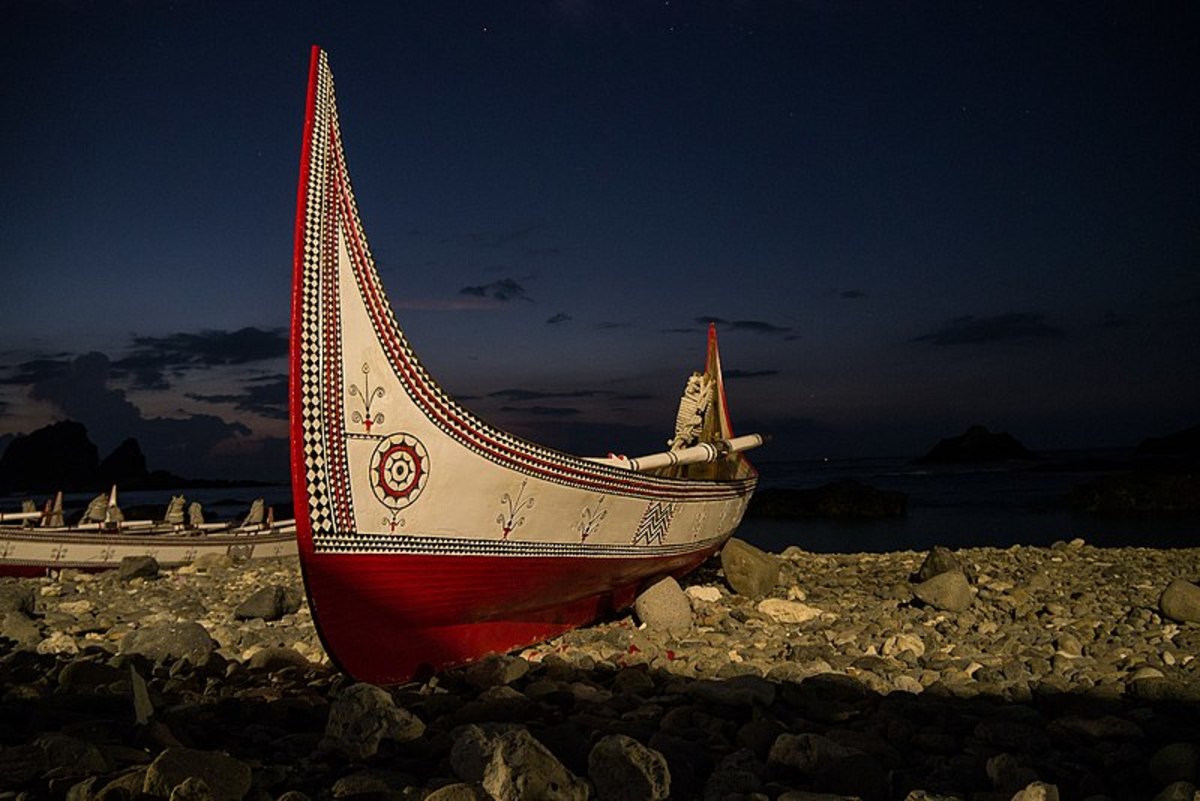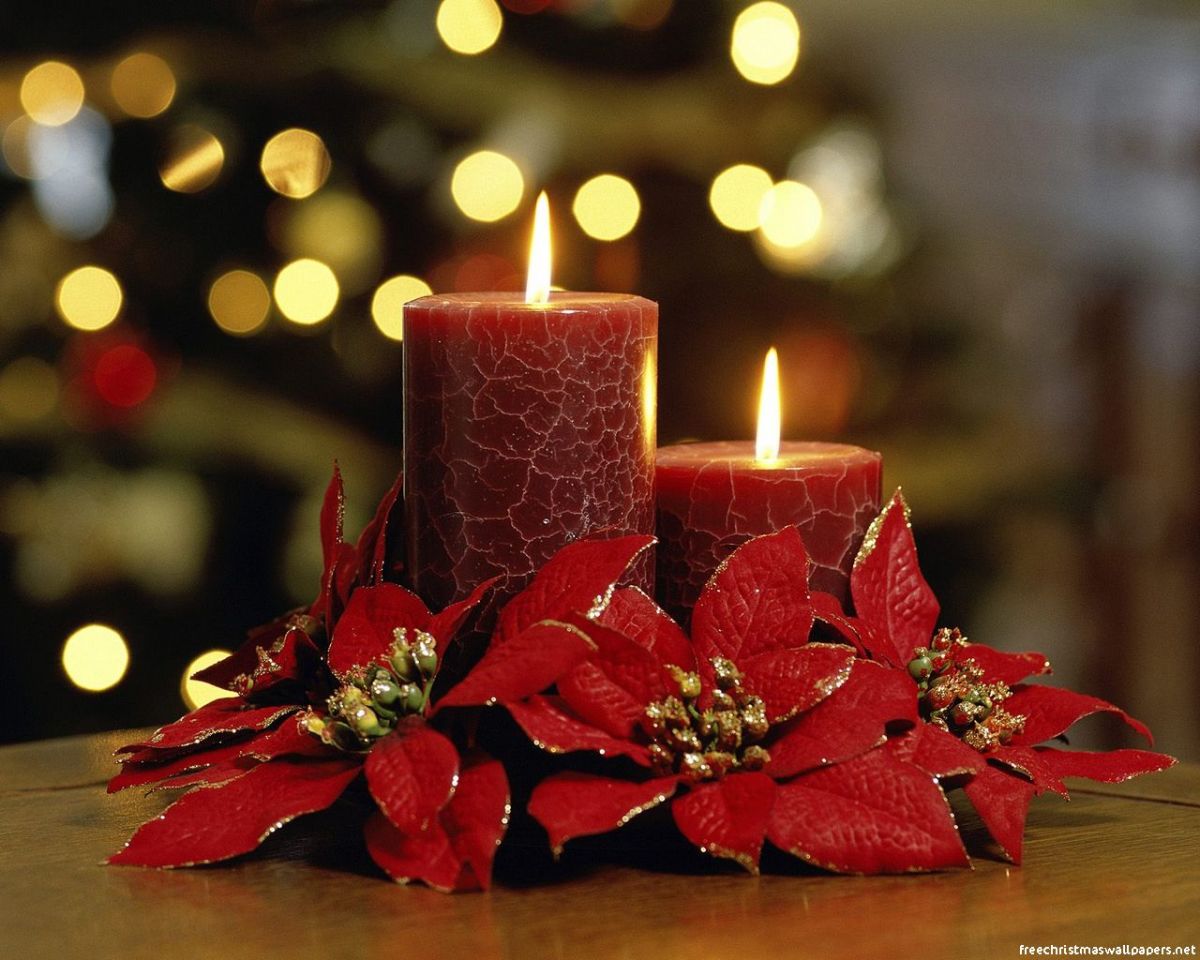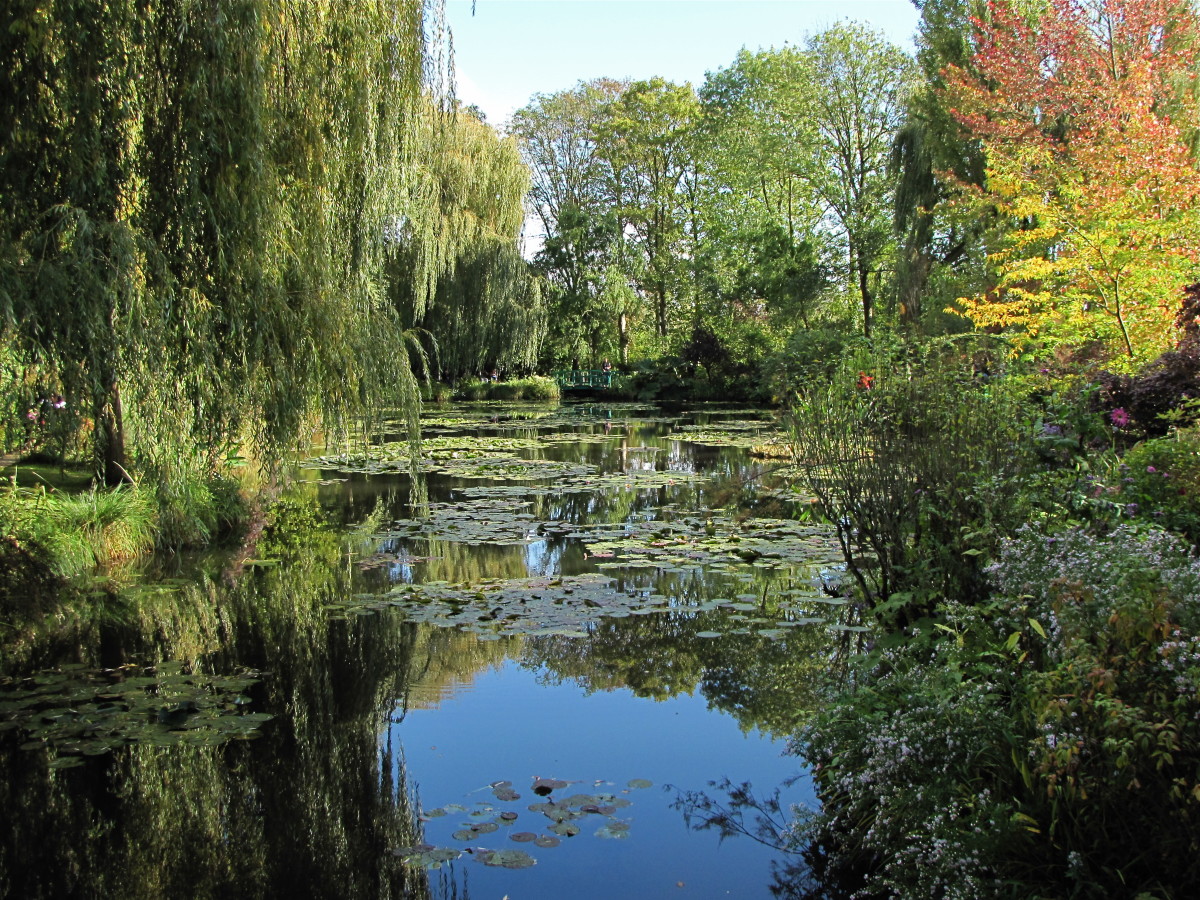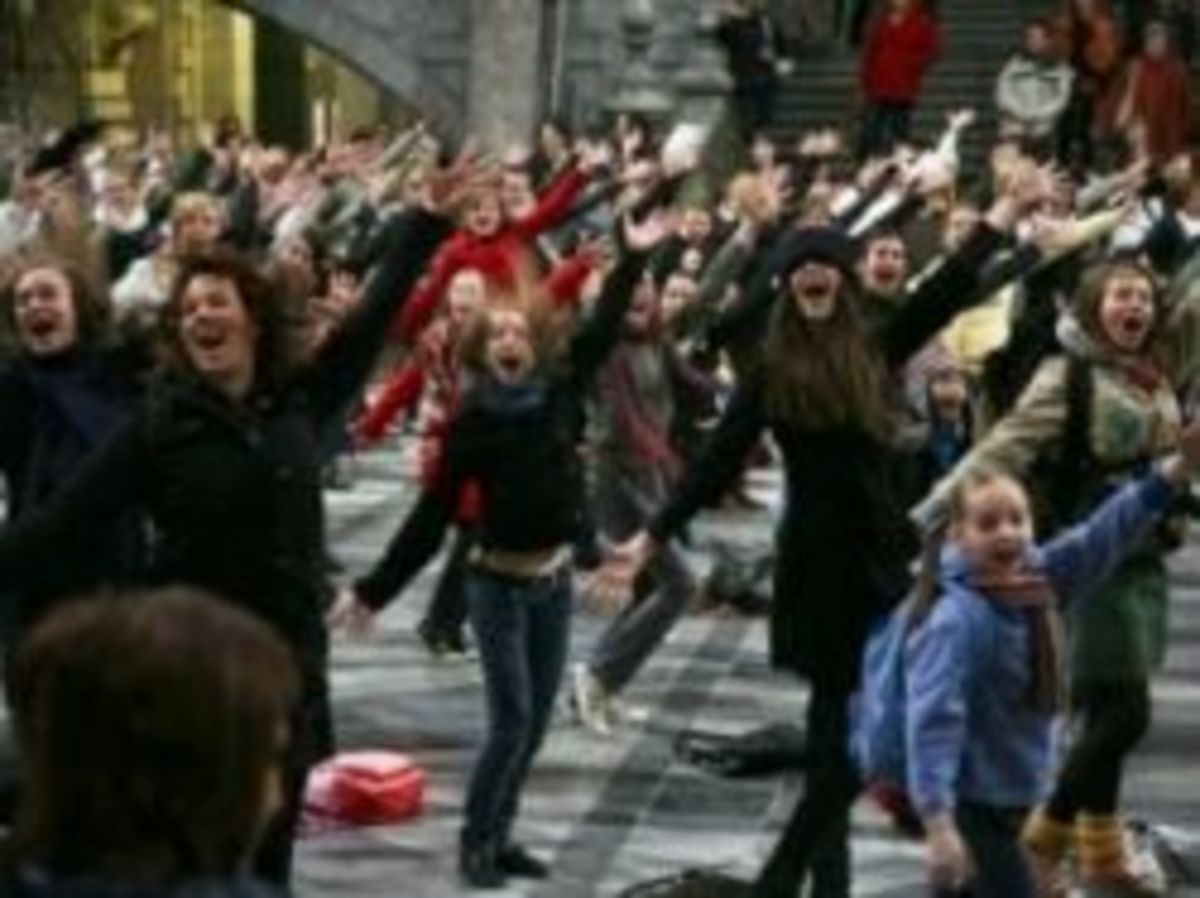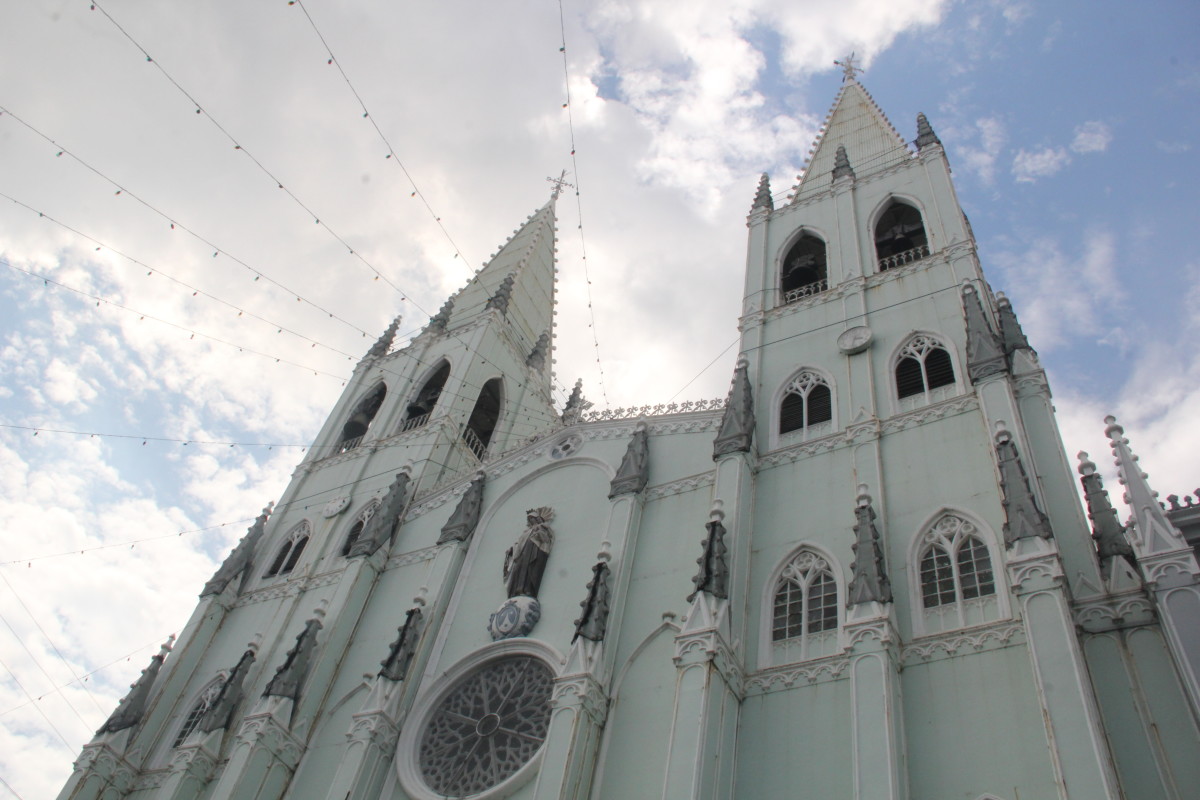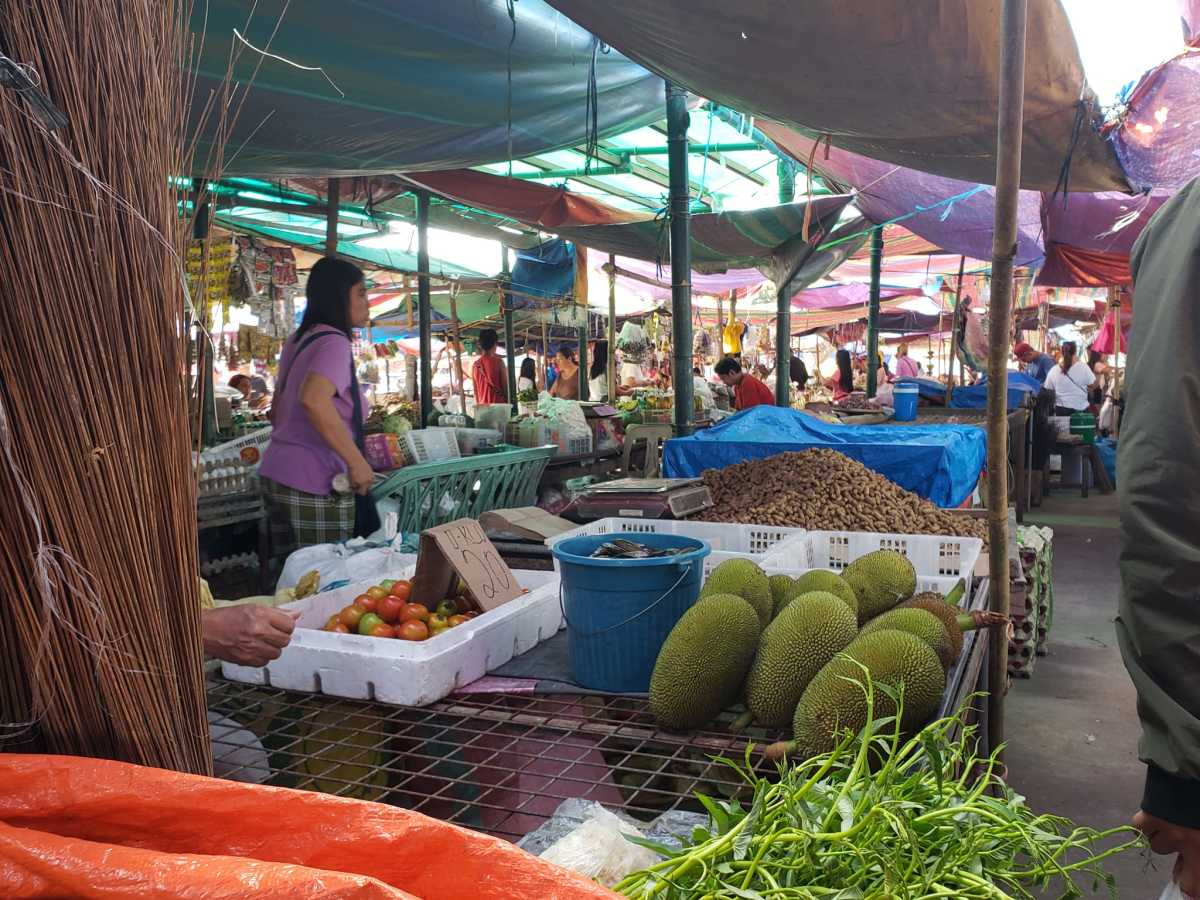A Visit to Beautiful Orchid Island
Map Showing the Train Line and Taidong
Taipei Train Station
A few years ago now, we decided to visit Orchid Island, or Lan Yü, as our Taiwanese friends called it. Children's Day Holiday on 1st June was coming up and that year it fell on a Monday, making a long weekend.
On the Friday evening after work we caught a bus to Taipei Train Station, a lovely modern building with shops, cafés and restaurants. We boarded the train to Taitung (pronounced Táidōng) and settled in. The lunch-boxes we purchased were great and included a tiny bottle of what we call Yakult. We had chosen an air-conditioned train, but it was crowded with excited young people. It was not easy trying to sleep sitting up and the lights remained bright the whole journey.
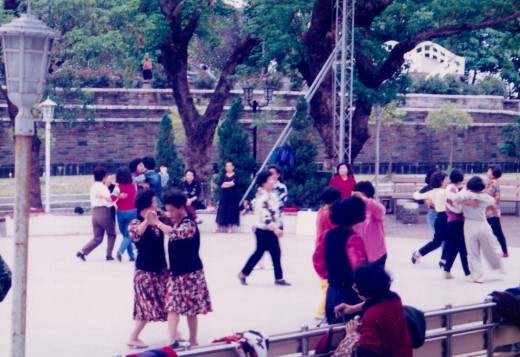
Taidong
We arrived early in the morning and enjoyed walking around near the Station, watching people exercising and dancing to music. Then it was time to board a bus for the airport.
The plane was due to leave at 7.30 a.m. and soon we were flying south-east over the ocean. The blue sky and mountains were beautiful in the early morning light.
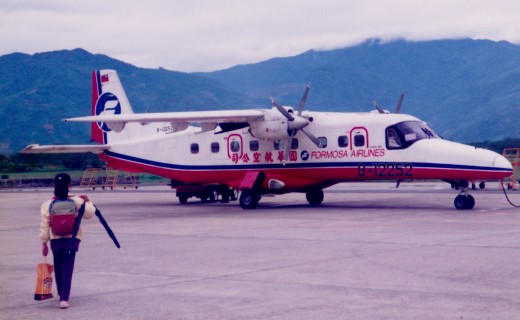
Orchid Island - Lan Yu
Lan Yu is a small, beautiful volcanic island about forty-five square kilometres and is part of the Republic of China's Taidong County.
About eight hundred years ago, Tao people migrated there from the Batan Archipelago in what is now the Philippines. The local language is Yami, and about two-thirds of the four thousand residents are aboriginal, while the rest are Chinese; compulsory education on the island is in Mandarin. Most of the aboriginal people are fishermen and farmers, although the younger generation usually go to Taiwan for further education and then not return, except to visit.
After the Sino-Japanese War, the Japanese ruled Taiwan. They declared Orchid Island an ethnological area so it was restricted and, unlike the other Taiwanese aboriginal groups, most of the Tao traditions were retained until 1945.
The island was known by several different names over the centuries, but was officially named Orchid Island, or Lan Yu, in 1946, because of its lovely orchids.
We Arrive
As the plane neared, we could see the tiny runway ahead. Each end appeared to protrude over the sea; the plane dipped low, rose as it approached the elevated runway, touched down and thankfully came to a stop before reaching the end.
A Taiwanese friend had arranged accommodation in the Kindergarten as it was free for the holiday. This proved economical and suited us, but there are hotels, too. We were met by the kindergarten bus and squeezed into the tiny seats. By the end of our stay we became used to feeling rather like Alice in Wonderland. We sat on tiny chairs at low tables for meals and slept on the floor. it was fun.
The Tao's staple diet is dried flying fish. In the right season, canoes go out in early morning and later the catch is brought in, dealt with and hung up to dry.
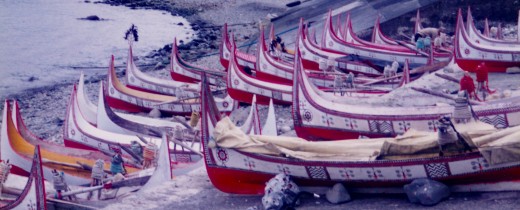
The Canoes
The Tao people continue the traditional way of making and decorating their canoes and they looked very colourful lined up on the beach, some with sails.
One evening we walked along the beach and then climbed a green, treeless hill, which was probably an old volcanic plug. The climb was worth it: we sat on the grassy slope looking out to sea and watched some boats coming back to shore, silhouetted against a beautiful sunset.
As we sat, we noticed a lovely perfume and looked around. We were surrounded by dozens of what we call Christmas Lilies. With their cream bells turning pink in the sunset and the beautiful scent, it was a delight to be there.
Not so far out to sea was a smaller, uninhabited island known as Little Orchid Island, or Hsiao Lan Yü. It looked pretty from the distance and there were many seabirds wheeling around above its mountain. We were told it was a nesting place and home of a rare orchid. It was also used by the military for target practice.
We returned to our meal of cooked, dried flying fish plus accompaniments. They had lots of bones but the flavour was good. The other main foods are taro, yams and millet.
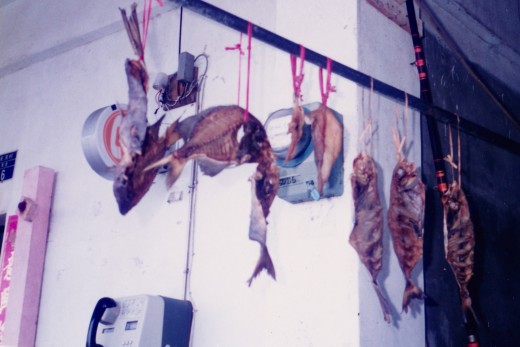
Housing
The R.O.C. government had constructed apartment buildings that were strong enough to withstand the earthquakes that frequently rocked the Island and Taiwan's east coast. They were intended for the local people and some lived there, but other folk preferred to continue living in traditional houses. These were mostly underground. Pits were lined with stone (see the photograph below) and then roofed over. The pigs' pens were similar. The style protected from the violent storms and typhoons that lash the area from time to time.
Numerous goats wandered along the roads and anywhere that was not strongly fenced. They even seemed to think that the cement bus-shelters were especially made for them and relaxed around on the floor and even on the seats!

Out and About on Orchid Island
There were other visitors staying in the Kindergarten, too, and the Presbyterian Minister kindly took us all for a drive around the island in the little bus. He stopped at various points of interest and we extricated ourselves from the narrow seats to take photographs.
Not far from where we stayed he skirted the Lan Yu Nuclear Waste Storage Facility. Built there in 1982 without permission from the local people, it stored the waste from the three nuclear plants that provide Taiwan's electric power. As it is a humid, tropical climate, especially there in the south, the iron storage barrels were rusting and of great concern.
Since the nuclear power plant disaster in Fukishima, Japan, in 2011, the people are even more concerned, especially for the effect that it may have on their children. Taipower has a huge problem as some of the 100,000 barrels now leak into the sea near where children swim, but no other site has yet been found.
Children's Day
On Children's Day we loaded up with a picnic and, following groups of excited, chattering children, took a road up one of the mountains. There are eight in that small space that are over 400 m. high; the highest is Mt. Hong Tou Shan (Red Head Mountain) at 552 m. I've no idea which one we climbed, but it was high, which made for lovely scenery, but it was hot work in that climate.
There were many tropical plants, some only found on Orchid Island, and as we climbed the vegetation changed. There were many birds flying around and calling. We had read that a number of them were not found on Taiwan, such as the Chestnut-eared Bulbul, and the Black Paradise Flycatcher. We did see a Red-capped Green Pigeon, that reminded us of the Emerald Doves in Papua, but we did not know enough about most of the birds to be able to name them and the people with us only knew the local names. They were lovely, though.
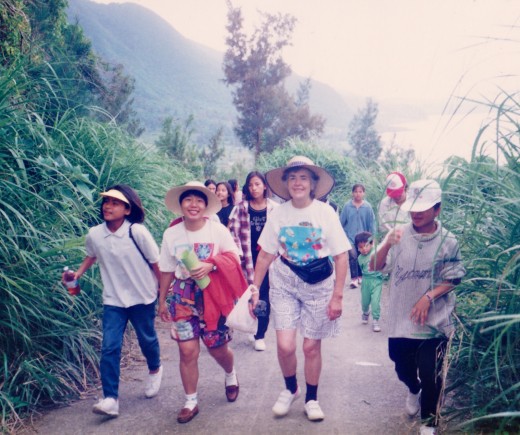
Climbing the Mountain
The higher we climbed, the more beautiful the scenery became. We could see the close mountains and the ocean far below. We could also see the road below that we had already been on, so that was encouragement to keep walking. Although we were hot from the walk, the light breeze was cooler and so welcome.
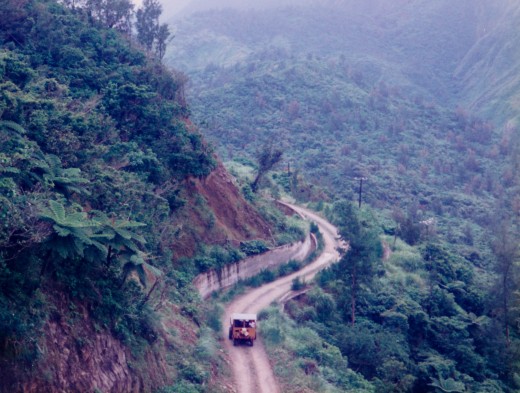
At the Top
At last we reached the top. One man was already speaking, so we sat down on the cool grass. The students were sitting in a large half-circle, listening quietly and we were glad to join them and cool down. After about half an hour that speaker concluded and the next began. We could see that others would follow and began to feel sorry for the students spending their holiday in this way. Signalling to each other, we quietly left them and found a shady spot with a lovely view where we could enjoy our packed lunches.
Later we walked back down the mountain and cooled off with a swim before packing our things ready to depart.
We had so enjoyed Orchid Island, the views, the birds, the orchids growing wild, the other flowers and the friendly people and were sorry that it was time to catch the plane for our journey back home to return to our workaday life next day, somewhat lacking in sleep! Happy memories!
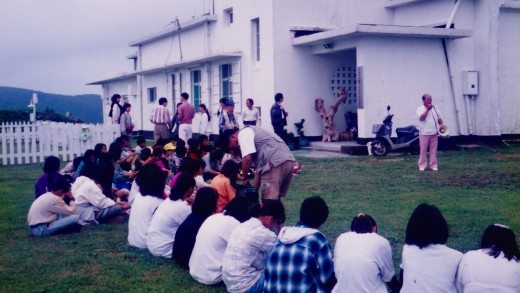
Places to Visit Around the World
- Cruising in Prince William Sound, Alaska
A description of a visit on Carnival Spirit to Prince William Sound in Alaska includes photos of glaciers, Sitka Spruce and the amazing sea mammals, Sea Otters. - Fascinating New Zealand Kauri Trees
Visitors to New Zealand will be delighted with the Kauri forest and the Northland Heritage Museum. The uses of both the timber and the Kauri Resin, or fossilized gum, are surprisingly varied and most interesting. Both places are well worth a visit. - A Visit to Kuching on the Island of Borneo
After a brief stay in the Malaysian State of Sarawak we fell in love with the place, the sights and the friendly people. With its climate that ranges from tropical in Kuching to cool in the mountain rain-forests it is a delight to visit. - Papuan Island Celebrations
During a stay on Fergusson Island as a Volunteer, I had an interesting trip in a dinghy to visit a bishop and his wife. Some time later I participated in the annual Wesley Day celebrations. - Volunteering in PNG - Fifty Years On (A Poem)
Two years ago I revisited the D'Entrecasteaux Islands fifty years after first going to live there for three years. Remembrances, written in verse, of the places and lovely friendships made there. Includes photographs of the beautiful scenery. - Shanghai Museum: A Glimpse of Ceramics Products Through the Centuries
In this second part of 'Wonderful Ceramics in Shanghai Museum', we look at some products of the industry through the ages, including the portrayal of animals, such as dogs, horses and camels, funerary figures and the shapes, and decorations. - Shanghai Museum: Ceramics, Kilns and Production Methods
An exciting visit to the Shanghai Museum only goes as far as the ceramics section as there is so much to see and learn about. This first article on the visit leads to a discussion of the production of Chinese ceramics. - Windows in Taiwan
Not all windows and doors in Taiwan seem to fit in with the dictionary definitions and yet many of them are interesting works of art influenced by the traditions and culture that has created them. - Out and About in Cape Town
Table Mountain is the famous place to see in Cape Town, but there are many other interesting places to visit in the town and in the nearby environment. As well as the places and buildings, the activities and wildlife, there's a great variety of food. - Cape Town's Table Mountain
Table Top Mountain in Cape Town, South Africa, is a World Heritage Site. The delicate flora and fauna are interesting and there is much to attract the photographer, including the famous Tablecloth.

